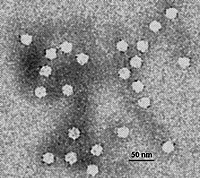
Photo from wikipedia
Several outbreaks of necrotic enteritis-like disease in lorikeets, from which Clostridium perfringens was consistently isolated, are described. All lorikeets had acute, segmental, or multifocal fibrinonecrotizing inflammatory lesions in the small… Click to show full abstract
Several outbreaks of necrotic enteritis-like disease in lorikeets, from which Clostridium perfringens was consistently isolated, are described. All lorikeets had acute, segmental, or multifocal fibrinonecrotizing inflammatory lesions in the small and/or the large intestine, with intralesional gram-positive rods. The gene encoding C. perfringens alpha toxin was detected by PCR (polymerase chain reaction) on formalin-fixed, paraffin-embedded (FFPE) tissues in 20 out of 24 affected lorikeets (83%), but it was not amplified from samples of any of 10 control lorikeets (P < .0001). The second most prevalent C. perfringens toxin gene detected was the beta toxin gene, which was found in FFPE from 7 out of 24 affected lorikeets (29%). The other toxin genes were detected inconsistently and in a relatively low number of samples. These cases seem to be associated with C. perfringens, although the specific type involved could not be determined.
Journal Title: Veterinary Pathology
Year Published: 2020
Link to full text (if available)
Share on Social Media: Sign Up to like & get
recommendations!